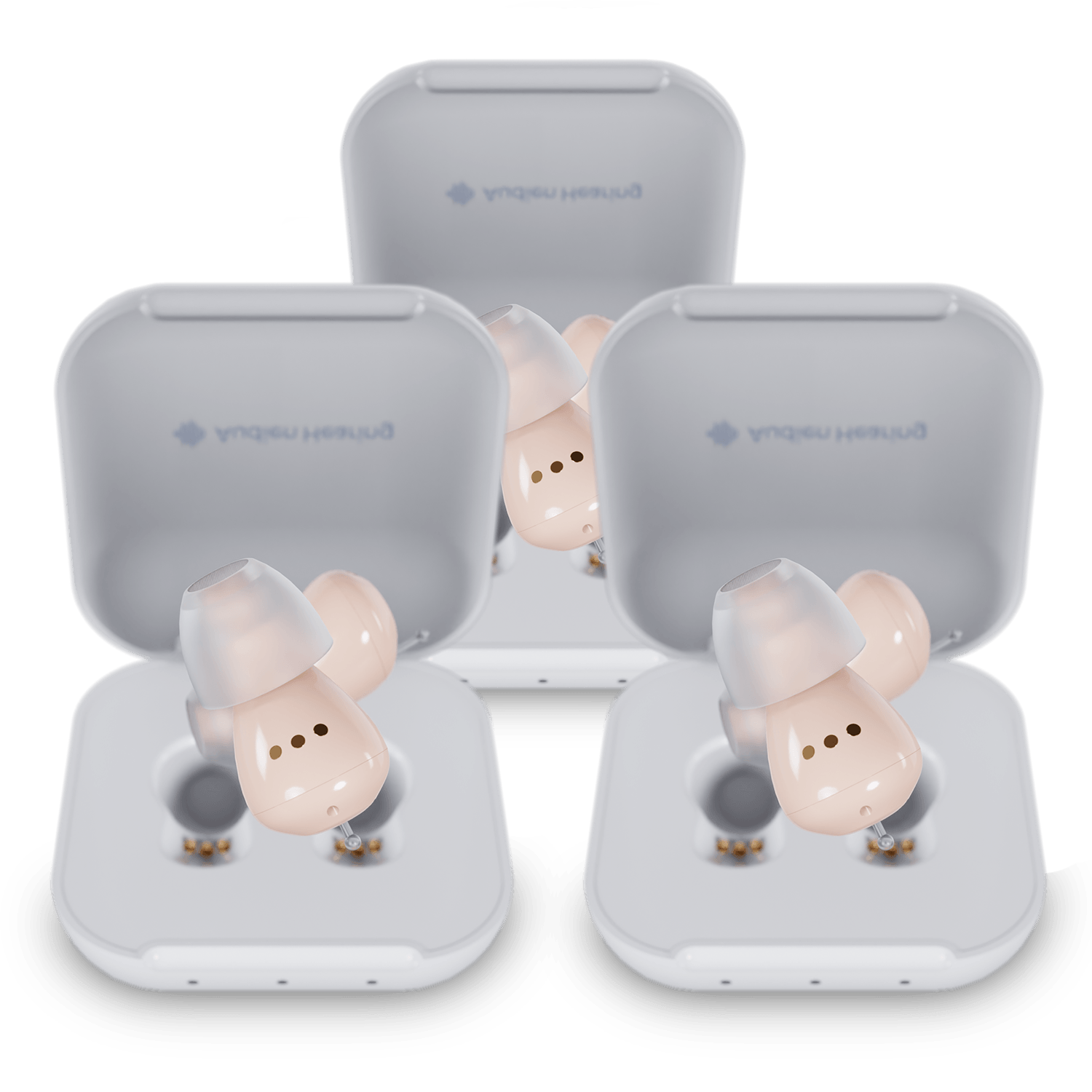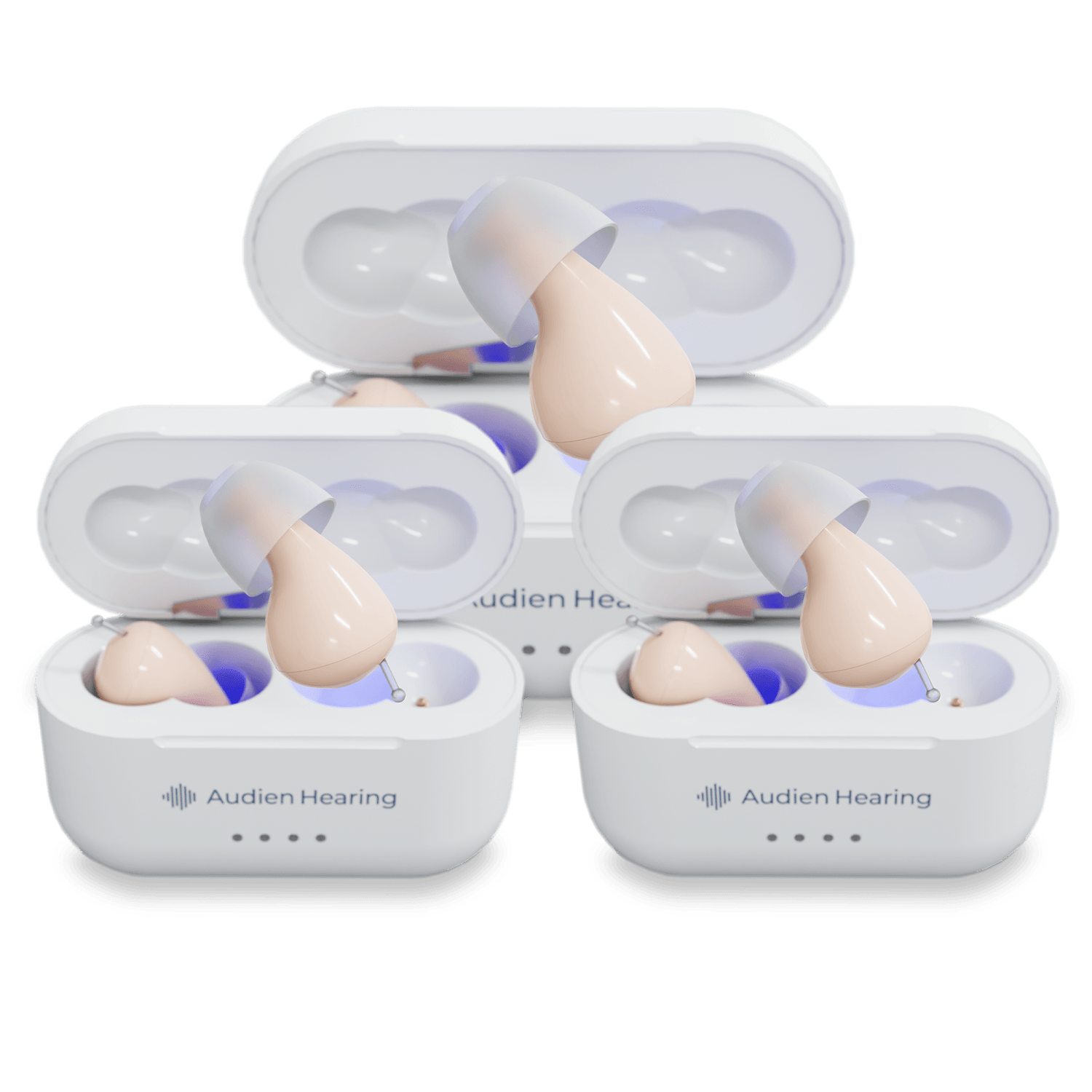Hearing aids are like an extension of yourself—you rely on them to more fully experience the world around you, and when they’re not working properly, you might feel helpless and frustrated. Naturally, then, you want to make sure you’re buying high-quality hearing aids that function properly and will stand the test of time.
Shopping for Hearing Aids
But as you start shopping around for your first pair, it’s easy to get overwhelmed. Why do hearing aids cost so much? Is it smart to buy a cheap pair of hearing aids, or will you be tossing them in the trash a few months down the road?
Fortunately, Audien Hearing can help answer all of your questions. We make it easy to find the best cheap hearing aids on the market, ensuring you get great quality, at a price you can afford.
How Much Do Hearing Aids Cost?
Before we dive into the reason why hearing aids cost so much and how to find the best cheap hearing aids, let’s cover our bases. How much do hearing aids cost in the first place? You may have heard a number tossed around, but is that really the going rate?
According to a report by Consumer Affairs, the average cost of just one hearing aid ranges from $1,000 to $4,000, with the highest-end hearing aids coming in at an astonishing $6,000 each. If you’re not in the market for a premium pair, you’re still going to have to fork out a lot of cash: a mid-range hearing aid costs somewhere between $3,000 and $4,500.
This cost is enough to give anyone who needs hearing aids major sticker shock, even when they hear the price does include a hearing test, consultation, fitting, and future adjustment.
How Hearing Aids Are Priced

Now that the shocking price of hearing aids is out there, let’s discuss how hearing aids are priced. There are many factors that go into the going rate for hearing aids—and unfortunately, most of them have little to do with the actual cost of the equipment.
1. Technology
As with smartphones, tablets, and computers, much of the cost of hearing aids is based on the technology required to create the device. Headphone technology is always improving, and as it does, the cost of hearing aids goes down.
This may be hard to believe (Hearing aids used to be even more expensive?), but today’s hearing aids deliver much more bang for their buck than devices of the past. Even if the cost has remained steady, a pair of hearing aids that costs $4,500 today has greater capability than hearing aids of even just a few years ago.
2. Competition
If you ever spent time in an economics class, you know that competition helps to drive down prices and make goods more affordable. But unfortunately for those with hearing loss, there simply isn’t much competition in the hearing aid market.
There are only a small handful of major hearing aid manufacturers out there, allowing them to corner the market and keep their prices high. Up until the last few years, these companies haven’t had anyone to compete with, so their customers had to pay the price—or go without. But here’s a bit of good news: online hearing aid companies have recently started to change all of that.
3. Audiology Visit
Typically, expensive audiology visits are all wrapped up in the cost of a pair of hearing aids. This means that when you’re handing over the money for your devices, you’re also paying for a consultation, fitting, and follow-up appointments once you have the hearing aids in place.
While this pricing is convenient for those who can afford it, the price also drives up the cost to an astronomical rate. An in-person visit with an audiologist is not essential to getting a high-quality pair of hearing aids that suit your needs, and if you don’t want to pay the premium for this service, you shouldn’t have to.
Fortunately, online hearing aid companies have cut out the middle-man, allowing consumers to get affordable hearing aids without paying for costly audiology visits.
4. Manufacturing
We’ve already discussed how hearing aid technology has a big influence on running up the cost of hearing aids. Likewise, manufacturing contributes to the expense of the devices. Such tiny medical equipment requires specialized machines to properly piece together the hearing aid, and this all goes into the final sticker price.
Once these hearing aids hit the market, there might be other markups, too. Wholesale prices and retail prices are designed to cover overhead costs like operation, paying employees, rent for a brick-and-mortar business, etc. But because of slim competition, hearing aid manufacturers take advantage of the chance to bump up the cost to a truly unbelievable rate.
5. Research and Development
Research and development is one of the final elements that go into the pricing of hearing aids. This industry spends hundreds of millions of dollars every year to advance hearing aid technology and equipment, making them more comfortable and helpful to those who wear them.
Surely, anyone with hearing loss would be glad to have hearing aids with increased functionality and enhanced hearing. But the cost of this type of research and development can certainly outweigh the benefits. Not everyone wants to contribute to paying the thousands of people who work full-time to improve hearing aid technology. But unfortunately, most consumers don’t know of any other option.
What’s The Difference Between Hearing Aids and Personal Sound Amplification Products (PSAPs)?

Many consumers shopping around for hearing aids are surprised to come across devices that cost $50-$100. Devices in this price range are typically considered Personal Sound Amplification Products (PSAPs). PSAPs offer similar technology to typical hearing aids but with a few key differences.
The lowest end PSAPs are not regulated by the FDA and are primarily used to amplify sound without advanced feedback reduction capabilities; whereas, hearing aids are FDA-regulated and are typically customized exactly to your needs. Hearing aids are intended for those suffering from diagnosed hearing loss. PSAPs can work for people who have been diagnosed with hearing loss but cannot technically be described as able to diagnose, treat, or cure hearing loss under current regulations.
Low end PSAPs amplify all types of sound to an equal degree—meaning you’ll be hearing the sound of street construction while you’re on a phone call, or the sound of your partner crunching chips while you’re watching TV. Because they don’t offer feedback control, sound amplifiers can sometimes damage your hearing.
The devices at Audien Hearing fall into a sort of grey area between these two options. We offer small, rechargeable technology, and even decibel gain similar to premium hearing aids. Our devices are still technically PSAPs, but, from years of testing, we have found that many customers actually prefer the sound quality on an analog device versus digital ones, which have feedback control. This is because the distortion was actually lower and sound quality more consistent. Also, many of the more costly hearing aids are geared to people who have hearing loss in only certain frequencies.
For right now, the one-size-fits-all products like ours fall in the grey area between PSAPs, OTC hearing aids, and hearing aids as described by the FDA today.
Where to Find the Best Cheap Hearing Aids
While you will need to make the decision between going the route of an expensive digital hearing aid, or a cheaper hearing solution, we recommend that you try a lower cost option first before spending big on a pair of hearing aids. From our experience, a low ticket product like ours is often all you need.
By cutting out the costly audiology visits and overhead costs of a brick-and-mortar location, Audien Hearing offers the best cheap hearing aids on the market today. Our hearing aids feature the same technology as a $5,000 pair of hearing aids—for just $89 per pair.
Audien hearing aids were rated the most comfortable hearing aids in 2019. Audiologists recommend our hearing aids more than any other, thanks to the premium technology, comfortable fit, and convenient rechargeable battery. And you don’t need a prescription to pick up a pair. Our USA-based company offers free and fast shipping, easy returns, and a 1-year warranty on all devices.
Get the Best Cheap Hearing Aids Today

If you’re ready to get incredible hearing at a price you can actually afford, buy your Audien hearing aids today. With a 45-day money-back guarantee, there’s no reason not to.
Audien Hearing offers the best cheap hearing aids on the market, delivering superior audio that enhances your everyday life. They come from an FDA-registered facility, and are sleek enough that no one will know you’re wearing them but you.
Check out our FAQ page to learn more about us, then order your Audien hearing aids and start hearing what matters.













